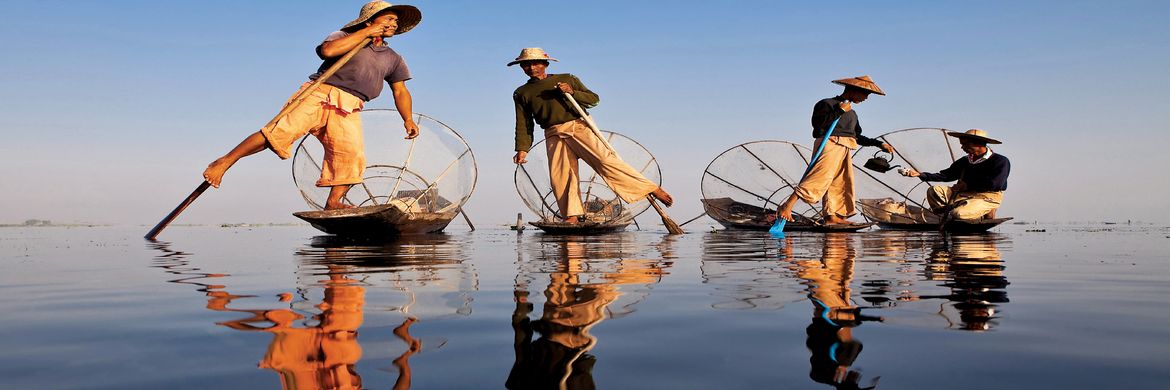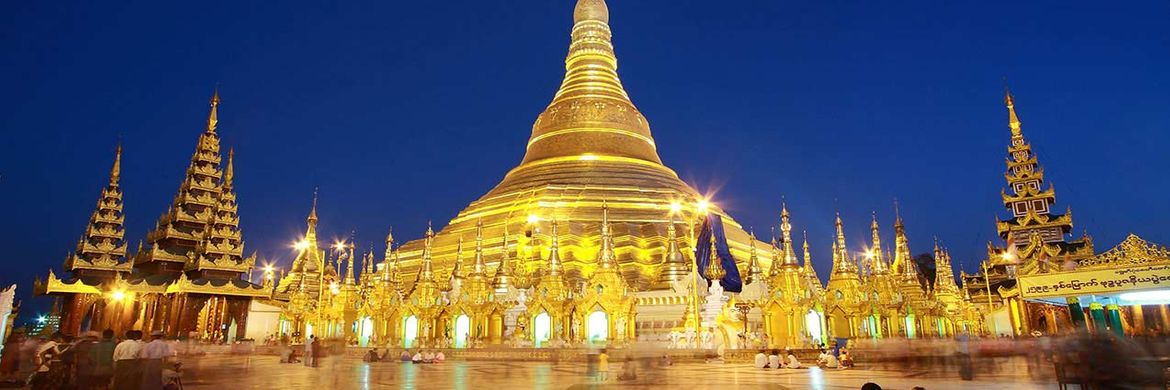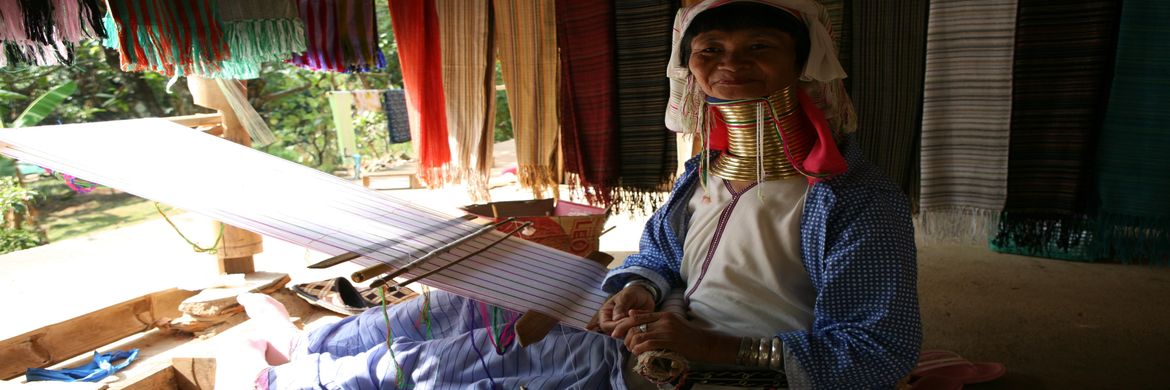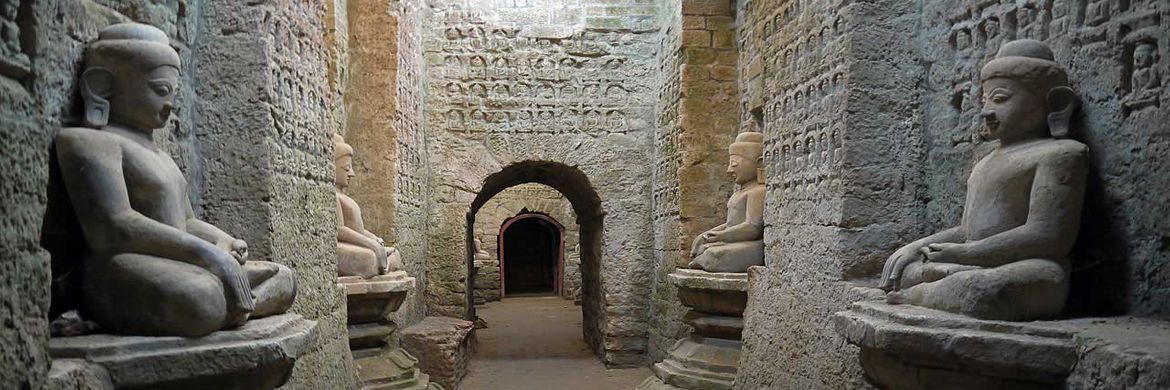Myanmar Escapes
Myanmar (formerly Burma) is a Southeast Asian nation of more than 100 ethnic groups, bordering India, Bangladesh, China, Laos and Thailand. Yangon (formerly Rangoon), the country’s largest city, is home to bustling markets, numerous parks and lakes, and the towering, gilded Shwedagon Pagoda, which contains Buddhist relics and dates to the 6th century.
Southeast Asia’s largest and western-most nation, Myanmar is at the crossroads between East Asia and South Asia, sharing borders with both Bangladesh and India. The result is an intoxicating blend of cultural influences. Combined with a traditional ways of life that prevails due to decades of isolation following British colonial rule, Myanmar’s geography contributes to a sense of ‘otherworldliness’ not found elsewhere in Asia.
To say that Myanmar (Burma) is undergoing rapid change would be quite an understatement. A land of fascinating history, gracious people and some of the foremost ancient architecture in Southeast Asia, it was nevertheless shunned by the international community for decades due to its repressive military rule. That began to change in 2011, when a transition towards civilian-led government and parliamentary elections ushered in a period of continuing reform and restored diplomatic relations with the U.S., Europe and other global powers. There is still a ways to go, but the developments in Burma are one of the most exciting stories to unfold in Asia in a long time. And with its vast natural resources and proximity to nearly 2.5 billion neighbours in China and India, Burma is poised to play a major role in 21st-century Asia.
Closed off for decades, Myanmar remains untainted by the globalisation seen elsewhere in Asia. Travelling in Myanmar is like travelling back in time. Hoof and muscle are used in place of machines, and western fashion sensibilities haven’t set root. For those looking for a ‘pure’ travel destination, Myanmar is it.
YANGON
Although it ceded its capital status during the years of military rule, Yangon remains the de facto economic, religious, cultural and artistic capital of Myanmar. It is the start and end point of most trips to the country. Known as Rangoon when the likes of George Orwell, Rudyard Kipling, Graham Greene and Somerset Maugham were passing through, Yangon’s crumbling colonial remnants seem a world away from the modern, capitalistic bustle that has reshaped other Southeast Asian cities. That all is changing, however, and quickly. This city of 4 million has witnessed a huge influx of foreign visitors in the past years, prompting authorities to modernize the city’s infrastructure, telecommunications and hospitality industry. Today, Yangon is poised to lead Myanmar into a new era in its modern history.
BAGAN
For several centuries, Bagan was the capital of the eponymous Bagan kingdom, a powerful empire that first conquered and consolidated the territory of modern-day Myanmar. During this time, Bagan became a prosperous, cosmopolitan city, drawing visitors and travelers from across Southeast Asia. Additionally, over 2,000 ancient temples, stupas, and palaces were erected by the Bagan Empire – many of which still stand today, concentrated on a single plain along the banks of the Irrawaddy River.
Highlights of any trip to this city include cruises on the Irrawaddy River, long a vital artery of the region; a hike up Mount Popa, whose 4,000 foot (1,219 meter) summit is adorned with temples; and viewing the myriad temples through the morning mist.
MANDALAY
Captured by the British from the last of Burma’s kings, Mandalay conjures images of Southeast Asia at its most elegant and genteel. Though today it is Myanmar’s second largest city, home to 1 million people, it is still possible to glimpse the enchanting land that beckoned Rudyard Kipling: “For the temple-bells are callin’, an’ it’s there that I would be – by the old Moulmein Pagoda, looking lazy at the sea.” One of the cultural and spiritual centers of the nation, Mandalay can also be enjoyed as the start or end point of a cruise on board The Road to Mandalay.
INLE LAKE
Temperate and picturesque, Inle Lake is one of the nation’s top attractions. Ringed by mountains and dotted by stupas and monasteries, the lake supports a remarkable, water-based culture, where floating farms grow fruit and vegetables, and many depend on fishing for their livelihood. The neighboring villages are populated by some 70,000 Danaw, Danu, Intha, Kayah, Taung-yo and Shan peoples, who live in houses on stilts over the lake’s 45 square-mile (117 square-kilometer) surface. Inle Lake is a pleasant, relaxing addition to any trip; popular activities include bicycling, hiking, boating, and a visit to a series of floating markets and villages.
- Luxury in the Wilderness – Enjoy a drink atop a private elephant coach.
- A Day in the Life – Experience what it’s like to live in rural Myanmar; taste local dishes and explore historical sites.
- Explore your spirituality – Visit a monastery and learn about local traditions.
- Taste a variety of local dishes – Experience the diverse flavours of Myanmar by sampling foods from different ethnic groups around the country.
- Understand Myanmar’s culinary culture – Visit popular tea shops, busy fresh markets and family homes to understand the role of food in the local culture.
- Learn to prepare Myanmar cuisine – Under the guidance of a local chef, use traditional techniques and family recipes to cook a typical Myanmar meal.
- Shop Like a Local – Visit the markets in Bagan, Indein, and Yangon to buy local goods and last-minute gifts.
- A View of the Majestic Inle Lake – Plenty of opportunities to appreciate Lake Inle await from riding sightseeing boats to having lunch at a heritage house.
- Breathtaking Sites from the Top – Ride a hot air balloon to enjoy unrivaled views of Bagan temples and the Irrawaddy River.
- Cook Authentic Local Dishes – Handpick organic herbs to be used for learning how to cook a sumptuous Burmese meal with the help of students.
- Explore City Life in Yangon – Walk through the bustling streets of Yangon and see what life is like in rural Myanmar.
- Enjoy a Romantic Meal – Toast to a new chapter in life and enjoy a sumptuous meals at the most lavish restaurants and in romantic settings.




